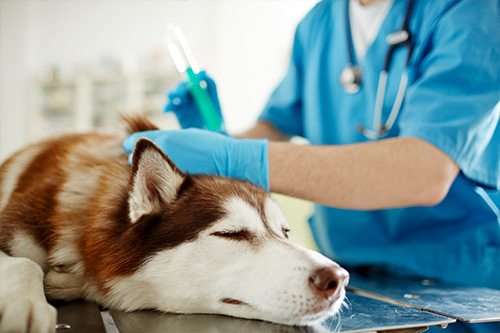
Many surgical and dental procedures will require your pet to be given a general anesthetic which renders them unconscious for the duration of the surgery. Anesthesia is induced and maintained through use of intravenous (IV) drugs and inhaled gases following strictly developed and constantly reviewed and revised anesthetic protocols.
The specific anesthetic protocol we use will be individually tailored to each patient’s age, health status, weight, and previous health and anesthetic history. In some cases, we will recommend preanesthetic lab testing to determine the function of organs and systems that can affect or be affected by anesthesia. If any concerns are identified, we will discuss the risks with you prior to proceeding, and we may tailor the anesthetic protocol to reduce or avoid the risk. In addition, it enables us to be being prepared for potential complications.
All pets under general anesthesia have an intravenous (IV) catheter placed and receive IV fluids during their procedure. Having the catheter in place also ensures that we can quickly and easily administer medications as needed during the procedure. Throughout the full duration of anesthesia from induction to recovery, your pet is closely observed and monitored for blood pressure, heart and respiratory rates and blood oxygen saturation to assure their safety and maintain an appropriate depth of anaesthesia.
Sedation and local anesthetic
Some minor procedures may only require a sedative and/or local anesthetic.
Sedation is used to calm an animal and make them less sensitive and anxious. The animal remains awake or may sleep but will remain easily roused. Sedation is used to allow safe handling and positioning during some examinations and treatments, as well as to reduce anxiety and stress.
An injection of local anesthetic (freezing) may be used to prevent pain during treatment of minor wounds, lacerations or foreign body removal.

